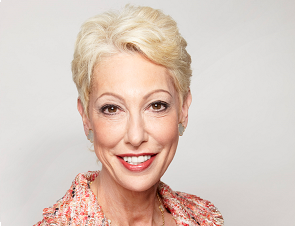What made you decide on a career in dermatology?
When I was 16 years old, I had a rash on my trunk, which baffled the pediatrician. When it wasn’t going away, they took me to see Dr. Alvin Friedman-Kien at NYU. From the door, he took one look and told me I had pityriasis rosea. I was fascinated by the sound of the long Latin name and I was hooked. From that moment on, I strived to get good grades in college and medical school so I could become a dermatologist. While in medical school, I read an article that stated that the average dermatologist performs many more surgeries on many more patients than the average surgeon. Always wanting to work with my hands as well as my head, this only reinforced my desire to become a dermatologist and eventually a Mohs surgeon and cosmetic dermatologist.
What is the best way for dermatologists to get educated on new lasers, products, and treatments?
There are a few “best ways.” One is to read as much as you can in peer-reviewed journals. Serving as co-editor-in-chief of the JDD, you might say I’m biased, but this journal is on the cutting edge of new devices and drugs that have a proven track record in dermatology. Another way is to attend lectures at meetings such as the AAD, ASDS, ISDS, and ASLMS. Many dermatologists don’t know enough about the ASLMS, but attending their annual meeting is a great way to learn more about the newest wavelengths and clinical indications for laser treatments. In addition, I believe it’s very important to clinically “shadow” an experienced dermatologist who specializes in the particular device or treatment you’re wishing to master. While industry-sponsored workshops can be helpful, nothing can compare to spending one-on-one time with an experienced laser specialist.
How do you determine the types of lasers you’ll use at your practice?
I like to keep it simple. At the same time, I like to be on the cutting edge, offering the latest and the best in laser technology. Basically, there are six main indications that a well-equipped laser center must offer:
1. A vascular-specific laser (I am on my 7th pulsed dye laser, upgrading as the technology improves);
2. A pigment-specific laser (a Q switched alexandrite, Q switched Nd:YAG, or a newer picosecond pigment-specific laser for tattoos and pigmented lesions);
3. A long-pulsed hair removal laser (I prefer an alexandrite wavelength for lighter skin patients and an Nd:YAG laser for patients with darker skin);
4. A non-ablative laser for striae, acne scars, fine lines, and wrinkles. There are many non-ablative lasers to choose from, but I find that these are useful because patients enjoy virtually no downtime);
5. A fractional ablative laser (I’m partial to a fractional CO2 as I believe it can truly tighten skin, along with smooth wrinkles and atrophic scars); and
6. For treating small areas of unwanted fat, including the submental area, I’m a big fan of laser lipolysis (while there are several wavelengths that can be used, I’m partial to the Nd:YAG 1440 wavelength).
Clearly, if you are just starting out, rather than purchasing many different machines, which can be price-prohibitive, it is useful to analyze your practice, assess what’s needed and start with one. There are platforms available today that are multi-purpose – you can start with one indication and purchase additional hand pieces and wavelengths that can be added to the same device.
Your mantra is: “Anything but the knife.” How do you educate patients on the knife-less options offered at your practice?
I like to spend at least a half hour during the consultation so that I can explain how lasers and other energy-based devices can be combined with neurotoxin and fillers in lieu of surgery. In my practice, I have trademarked a procedure called AceLift … Better Than A Facelift.™ AceLift™ is an acronym which stands for the Augmentation of Collagen and Elastin via Lasers, Injectable Neurotoxins, Fillers and Topicals. I spend a great deal of time educating my patients on why they “look old.” I break it down into three components: 1) photodamage; 2) volume loss; and 3) sagging of the face and neck. I show them before and after photos of other patients who have undergone the AceLift procedure who had similar cosmetic challenges. I also educate them on effective skin care ingredients as well as daily sunscreen use.
What types of technologies and products would you like to see developed next for skin care?
I’m a big fan of hyaluronic acid. When it’s injected under the skin, it not only improves contours but it gives the skin a luminescent glow. I would like to see new technology that can deliver superficial intradermal hyaluronic acid pan-facially in an efficient manner with very little downtime. I’m also looking forward to the FDA clearance and release of topical neurotoxin for the treatment of fine lines.

